Toxic PCBs linger in schools; EPA, lawmakers fail to act
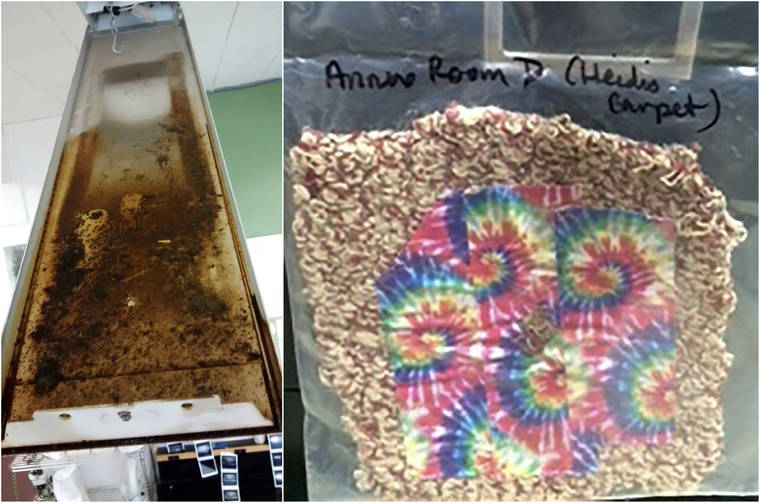
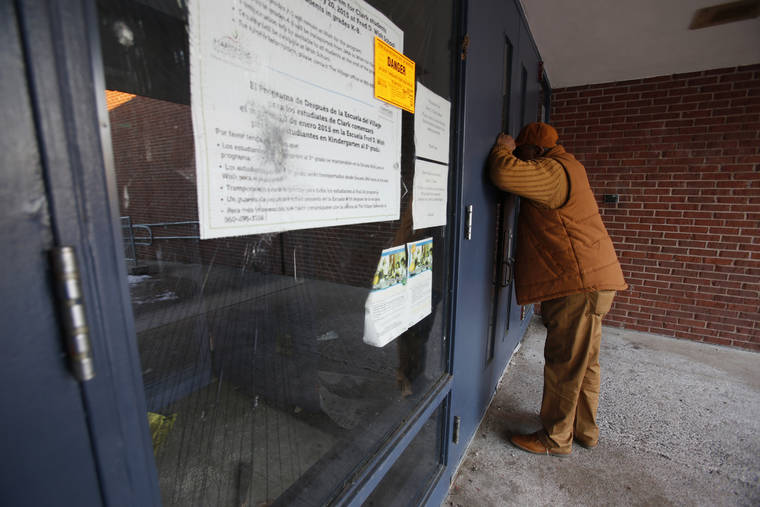
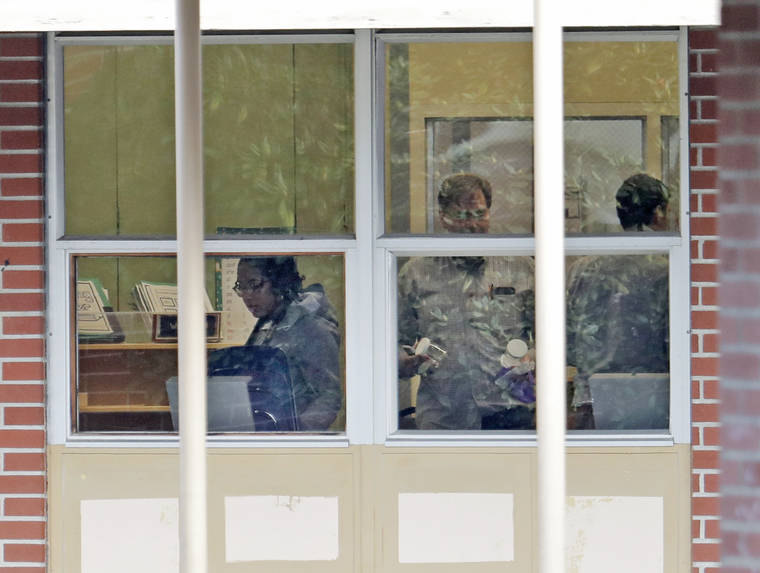
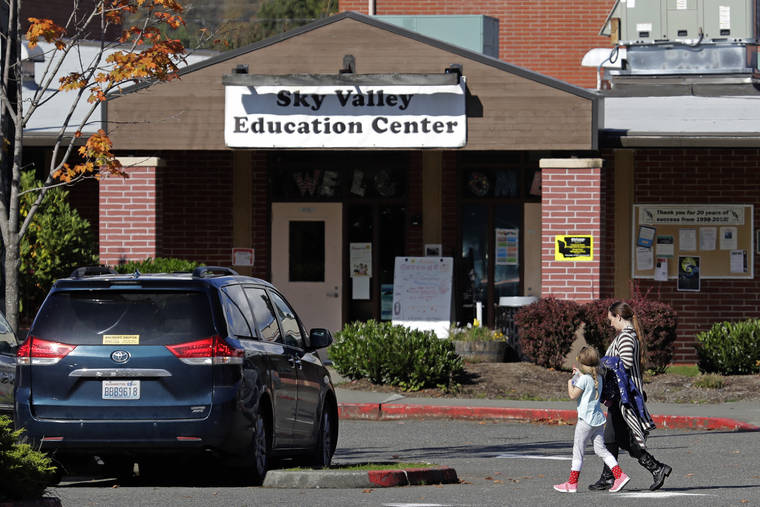
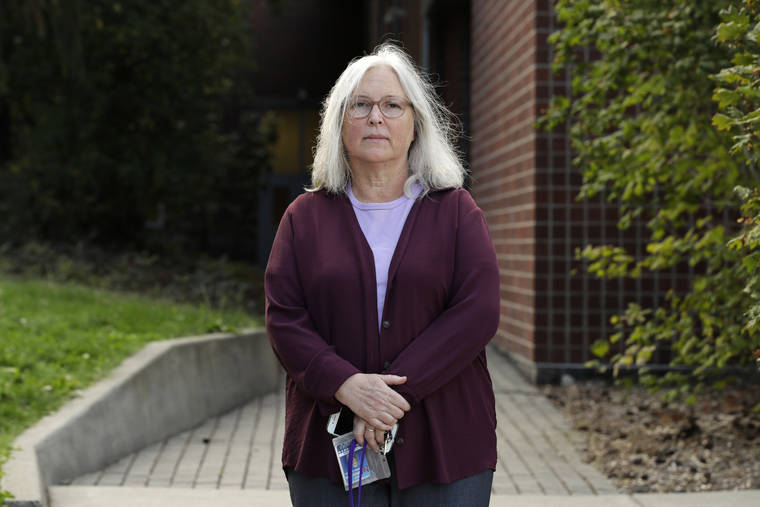
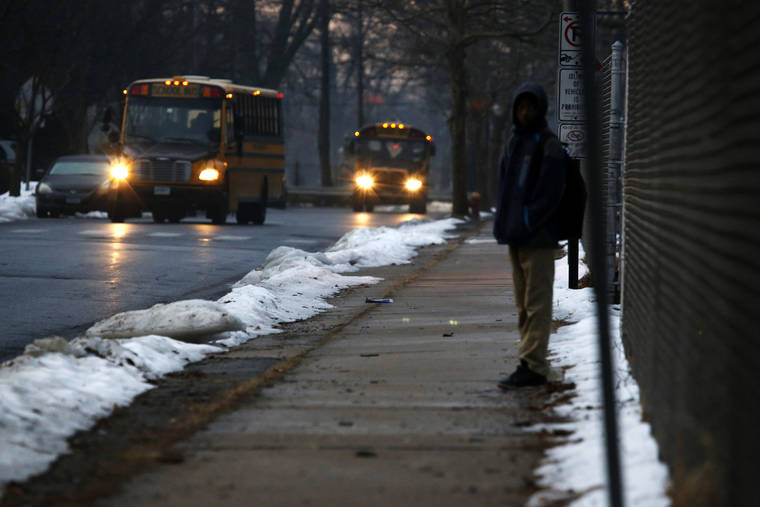
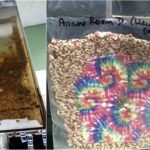
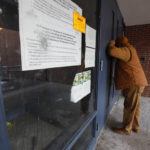
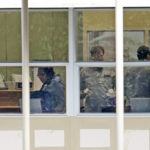

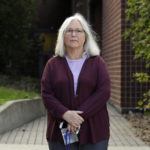
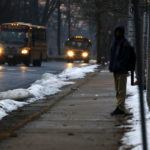
MONROE, Wash. At first, teachers at Sky Valley Education Center simply evacuated students and used fans to clear the air when the fluorescent lights caught fire or smoked with noxious fumes. When black oil dripped onto desks and floors, they caught leaks with a bucket and duct-taped oil-stained carpets.
MONROE, Wash. — At first, teachers at Sky Valley Education Center simply evacuated students and used fans to clear the air when the fluorescent lights caught fire or smoked with noxious fumes. When black oil dripped onto desks and floors, they caught leaks with a bucket and duct-taped oil-stained carpets.
Then came the tests that confirmed their suspicions about the light ballasts.
“Sure enough … it was PCB oil,” said Cynthia Yost, who was among teachers who sent pieces of carpet and classroom air filters to a lab. Tests found elevated levels of the toxic chemicals, used as coolant in the decades-old ballasts that regulated electrical current to the lamps.
Millions of fluorescent light ballasts containing PCBs probably remain in schools and day care centers across the U.S. four decades after the chemicals were banned over concerns that they could cause cancer and other illnesses. Many older buildings also have caulk, ceiling tiles, floor adhesives and paint made with PCBs, which sometimes have been found at levels far higher than allowed by law.
Yet the Environmental Protection Agency has not attempted to determine the scope of PCB contamination or assess potential health risks, in large part because of lack of funding, political pressure and pushback from industry and education groups, according to dozens of interviews and thousands of pages of documents examined by The Associated Press.
Members of Congress who promised three years ago to find money to help address PCBs and other environmental problems in the nation’s schools never introduced legislation.
And an EPA rule that would have required schools and day cares to remove PCB-containing ballasts moved slowly under the Obama administration, then was quashed by President Donald Trump within days of his inauguration.
That was the final straw for Tom Simons, a former EPA regulator who worked for years on the rule and said getting rid of ballasts was the least the EPA could do to protect children.
“We thought it was a no-brainer: There are millions out there. These things are smoking and dripping, so let’s put this through,” said Simons, who retired shortly after Trump took office.
———
For decades, the presence of PCBs in schools flew under the radar.
States, cities and environmental agencies focused on removing them from lakes, rivers and toxic waste sites because most exposure to PCBs is believed to come from people’s diet, including fish from contaminated waterways, and because PCBs do not break down easily. Studies have linked them to increased long-term risk of cancer, immune and reproductive system impairment and learning problems.
PCBs, or polychlorinated biphenyls, are mixtures of compounds manufactured by Monsanto Co. and widely used as coolants and lubricants in electrical equipment until they were banned in 1979.
By then they were in transformers, air conditioners, adhesives, carbonless copy paper and billions of fluorescent light ballasts in schools, hospitals, homes, offices and commercial and industrial buildings. They also were ubiquitous in the environment and building up in human bodies.
Nobody worried about schools.
Then a 2004 study by Harvard health professor Robert Herrick identified the widespread use of PCBs as a plasticizer in caulk in schools built before 1980, estimating that as many as 14 million students and 26,000 schools could be affected. The EPA had not been aware of its use in caulk before then, Simons said.
The EPA later found that the chemicals can move from building materials into the air and dust, where they can be inhaled or ingested. They also can be absorbed by walls and other surfaces as an ongoing source of exposure.
Regulators also discovered that old fluorescent light ballasts remained a potentially widespread source of PCB contamination. The EPA had allowed the ballasts to remain in use because chemicals were in enclosed capacitors that experts thought would last only about 12 years. But it turns out they can last a half century or longer, said Simons.
The older they are, the more likely ballasts will leak, catch fire or smoke. And that has happened repeatedly in schools, office buildings, restaurants and factories in recent years, according to reports reviewed by the AP.
But the EPA has mostly voluntary guidelines, including recommended indoor air limits for PCBs that it says should protect children from health problems.
The agency does not require — or encourage — schools to test for PCBs, so few do. If they are found in materials such as caulk, schools could be forced to undertake expensive cleanups when many are struggling to keep basic infrastructure intact and meet educational needs. Drawing attention to the issue also risks alarming parents.
PCBs are illegal in building materials in concentrations exceeding 50 parts per million — a threshold set by the EPA decades ago based on how much contaminated material could affordably be removed rather than health risks.
Rather than fostering “a very confusing and fearful situation,” the EPA should recommend that schools test classroom air for PCBs, then identify and address specific sources if the results are elevated, said Keri Hornbuckle, a civil and environmental engineering professor at the University of Iowa and one of the nation’s top researchers of PCBs in schools.
“There is a good reason PCBs were banned, so … let’s remove the worst cases and where (kids) are most vulnerable and have the highest exposure,” she said. “But you have to have the data.”
———
Whether PCBs are addressed often is determined by ZIP code.
In California’s wealthy Santa Monica-Malibu School District, parents, including model Cindy Crawford, sued to force the district to address PCBs after tests of caulk found levels up to 11,000 times the 50 ppm threshold. The district ultimately agreed to get rid of PCBs. It has torn down a middle school and continues to remove them from other buildings.
In Hartford, Connecticut, the ending was far different. John C. Clark Elementary and Middle School, in a largely low-income African American neighborhood, was permanently closed in 2015 after PCBs were found and the city could not afford to remove them. The city has sued Monsanto and a company that manufactured caulk to recover the costs.
“It was the crown jewel of the neighborhood,” Steven Harris, a former city council member and grandfather, said as he walked the deserted school grounds. “Our school board is doing the best they can. The reality is we don’t have a lot of money. And it’s going to take money to fix this problem.”
Monsanto, now owned by Bayer Crop Sciences, has denied responsibility in lawsuits involving several school districts, saying it did not manufacture the building materials or components that contained PCBs.
Concerns over schools like Hartford’s are one of the issues that ultimately kept the EPA from taking stronger steps to address PCBs.
The agency, which originally recommended that schools test for the chemicals, was warned by the Association of California School Administrators that forcing schools to remove PCBs could create “a civil rights issue” if low-income minority schools could not afford it. What’s more, many of those schools have other environmental problems — including lead, asbestos and mold — that could be higher priorities.
So instead, the EPA developed guidance that promotes vigilant cleaning and better ventilation and suggests schools could cover materials suspected of containing PCBs until the buildings are renovated or razed.
But the recommendations were released quietly on the agency website to avoid publicity that might frighten the public, according to former EPA officials who said the agency was hamstrung by a problem that could cost billions of dollars. There are no rules requiring school officials to tell parents if they find or suspect their buildings have PCBs.
Judith Enck, administrator of the EPA’s Region 2 under Obama, said the EPA bowed to intense political pressure.
“The debate was never based on science and health. It was ‘We don’t want the grief from schools, and it’s a lot of work and we have other priorities,’” said Enck, who led an effort to get ballasts out of New York City schools. “I disagreed.”
A bill introduced in 2010 by three New York congressmen aimed at funding school PCB cleanups was withdrawn after New York City officials agreed to replace aging ballasts. Sen. Ed Markey of Massachusetts released a report outlining PCB risks in October 2016 — a month before Trump’s election — and said he would introduce legislation to help with PCB cleanup and other school environmental problems, but never did. His office did not respond to multiple AP interview requests.
It was clear that PCBs were so widespread that cleanup would overwhelm schools without a huge financial commitment from Congress, said Tom Huetteman, the former assistant director of the PCBs program at EPA Region 9, based in San Francisco.
But he said the EPA’s guidance outlined important steps schools could take to reduce exposure regardless of their finances.
“It would be great if there was zero exposure in schools, but that’s not the world we live in,” Huetteman said.
Current EPA officials said in written responses that the agency’s recommended precautions are usually effective, but the steps might not adequately reduce exposure in every school. It also said the agency is “actively identifying” money for a program targeting school environmental hazards.
———
The EPA decided that dealing with old PCB-containing light ballasts was easier and hurried to adopt the rule that would have required schools and daycares to remove them before Obama’s second term ended, only to fall short. It was killed as part of a wider regulatory rollback under Trump.
The agency had advised schools to get rid of ballasts in 2001 — two years after a ballast failure sparked a fire at a Southern California high school and improper cleanup of a ballast leak exposed people to PCBs at an Oregon school. The agency made the same recommendation again in 2010, when it was clear ballasts remained a problem.
But the EPA in 2015 estimated that there still were 2.6 million PCB-containing ballasts in schools and a half-million in day cares, with up to 70 percent of them likely leaking. Almost 40 million more were in buildings such as hospitals, public housing and offices.
New York City public schools replaced hundreds of thousands of ballasts in almost 900 schools between 2013 and 2016, after being sued by parents who had become alarmed when failing ballasts were found throughout the district, even leaking oil onto a student.
In Los Angeles, officials last year finished removing 14,220 PCB-containing ballasts from about 750 schools, officials said.
Many school districts now have replaced fluorescent light ballasts through energy-savings partnerships with utilities. And the Department of Energy phased out production of the light tubes used in the ballasts that used PCBs.
But a surprising number of suspect ballasts still are in use, especially in urban, rural and low-income districts with older buildings, and in the Midwest and South, experts said.
In Detroit, about 2,500 old light fixtures likely to contain PCBs were found in six schools, and will be removed by April, according to the EPA. Another 750 ballasts will be removed from five recreation centers.
But even if old ballasts are removed, the schools still could be contaminated with lingering PCBs. Without testing, no one would know. To save money, some school districts just swap out the old fluorescent tubes with LED bulbs and keep the ballasts or PCB-stained fixtures.
Many school officials and fire departments don’t know if any of their ballasts contain PCBs, which must be handled as hazardous waste. Often, they just clear the smoke after a ballast failure and allow the kids back in the classroom, the AP found when investigating incident reports.
When firefighters were called to an elementary school in Buckhannon, West Virginia, this past May, Lt. Linn Baxa was not surprised to discover that a PCB-era fluorescent light ballast was smoking.
“We go on calls for light ballasts like that three or four times a year,” he said. “They’re still around here in a lot of older buildings.”
That’s troubling to Hornbuckle.
“There’s no reason that a school should have PCB-containing light ballasts in it anymore,” she said. “It’s my opinion that it should not be legal to have such a potential risk waiting in a schoolroom.”
The EPA says it’s focusing resources in other areas rather than reviving the rule.
———
Proving PCBs caused someone’s specific illness is daunting and sometimes impossible. That’s because problems can take years to develop, and people are affected differently. And not everyone who’s exposed will get sick, experts say.
But parents and teachers who say they were exposed to PCBs in the Washington school are trying to prove their case.
In Monroe, a town of about 19,000 nestled in the foothills of the Cascade Mountains, a lawsuit was filed last year on behalf of Sky Valley teachers, students and parents who believe they were sickened by PCBs and, possibly, even more toxic dioxins and furans that can form during PCB combustion. It names the school district, county health department, Monsanto and companies that mixed PCBs into other products.
The lawsuit alleges that more than 100 ballasts likely had failed in the three years before an April 2014 memo from the Sky Valley principal responding to complaints about ballast failures at Sky Valley.
“Our building is quirky and old and sometimes a problem. But it is ours. And it is safe,” she wrote.
The lawsuit alleges the district had never tested for PCB contamination and had not followed a state policy to regularly inspect old light fixtures, though it had known since at least the year 2000 that many contained PCBs.
One mom, Donya Grant, compiled a spreadsheet of dozens of students, teachers and parents with their symptoms and illnesses. Headaches and nausea are among symptoms reported during ballast burnouts investigated by the National Institute of Occupational Safety and Health. Studies have also associated PCB exposure with increased risk of thyroid problems and early puberty, among other problems.
“Even though I don’t know as much as the scientists do, I do know that when I look at those symptoms that I can say, ‘Check, check, check — we have experienced those,’” said Grant, who now home schools three of her four children. She said all of them have had health issues — nosebleeds, migraines and brain fog — that she believes were caused by spending time at Sky Valley. Her youngest daughter and some of her classmates experienced the start of menstruation as young as age 6.
The Monroe school district, which owns Sky Valley Education Center, said in a statement that recent sampling found no elevated levels and noted that nobody involved in the lawsuit “has produced a diagnosis or opinion from a licensed physician finding that their claimed injuries are the result of exposure to PCBs or related substances” at the school. The district also said that it removed PCB-containing caulk and contaminated light fixtures and has encapsulated other sources.
Monsanto said there is no proof PCBs cause significant health problems, especially at the levels found in building materials and light ballasts.
Still, former EPA toxicologist Mark Maddaloni said it’s crucial to reduce PCBs in schools because children are more vulnerable and continued exposure begins to “chisel away at the margin of safety,” and could increase the odds of long-term health problems.
What’s more, a recent study that found schools can be a greater source of PCBs to children than food and outdoor sources, even toxic waste sites, said Hornbuckle, who led the study funded by the federal government’s National Institute of Environmental Health Services.
Toxicologists have said more studies of the health effects of inhaled PCBs are needed to more confidently assess health risks in schools and other buildings.
Herrick, the Harvard professor, said neither Congress nor the EPA have stepped up to create a “coherent national policy” on PCBs, as they did to a greater extent for asbestos and lead contamination.
“They intentionally dodged their responsibility to put some sort of framework around the problem,” said Herrick, who retired last year. “I think it’s because they don’t want the answer.”
Webber reported from Hartford, Connecticut, Chicago and Washington, D.C. Irvine reported from Hartford, Chicago, Washington, D.C., and Monroe, Washington.





